|
The Ayodhya
Verdict - Triumph of Truth
In this Kali Yuga - The grievances of millions of Hindus around the world stands
vindicated with this landmark judgment.
***
"One word of
truth is stronger than all the lies in the world."
-
Aleksandr Isayevich
Solzhenitsyn
(1918 - 2008).
 Nirad C.
Chaudhuri (1897-1999) His
first book, The Autobiography of an Unknown Indian,
was published in 1951 and was followed by many others, including The Continent
of Circe, for which he won the Duff Cooper Memorial Prize, and Thy Hand Great
Anarch!, a second volume of memoirs. Booker Prize winner. Chaudhuri moved to
England in 1970. Nirad C.
Chaudhuri (1897-1999) His
first book, The Autobiography of an Unknown Indian,
was published in 1951 and was followed by many others, including The Continent
of Circe, for which he won the Duff Cooper Memorial Prize, and Thy Hand Great
Anarch!, a second volume of memoirs. Booker Prize winner. Chaudhuri moved to
England in 1970.
He wrote about Ayodhya thus:
"That what happened in Ayodhya should not have happened is another matter. But I
say that the Muslims do not have the slightest right to complain about the
desecration of one mosque. From 1000 A.D. every Hindu temple from Kathiawar to
Bihar, from the Himalayas to the Vindhyas has been sacked and ruined. Not one
temple was left standing all over northern India. At the beginning of the 18th
century the Jesuit priest and mathematician
Tippenthaler noticed in the evenings as he travelled from Malwa the
flickering flames of tiny earthen lamps placed by the villagers at some risk to
themselves. Temples escaped destruction only where Muslim power did not gain
access to them for reasons such as dense forests."
Otherwise it was a continuous spell of vandalism. No
nation with any self-respect will forgive this.
They took over our women. And they imposed
the Zazia, the tax. Why should we forget and forgive all that?
What happened in Ayodhya would not have happened had the Muslims acknowledged
this historical argument even once."
All Hindu historians are liars.
From 1907 onwards we became aware of the Hindu-Muslim problem as regards the
nationalist movement. From that date until 1946 every fellow Bengali I have
asked and every other Indian too had only one standard argument: The Hindu-
Muslim problem does not exist. It has been created by the British.
"The Muslims were the first to invent the thoery of
permanent revolution. The communists took
over from them. No Muslims can live under the political domination of
non-Muslims. Secondly, Muslims divide the world into two: regions of peace and
regions of conflict. It is the duty of of every Muslim to bring the latter
within the fold of Islam. The Arab equivalent of the caliph is "Commander of the
Faithful". And his obligation is
jihad
(holy war)."
Refer to
Islam: Arab Imperialism - By Anwar
Sheikh. Refer to
Kashmir Hindus: Forsaken, forgotten for 21 years
- By Lalit Koul and
Ethnic Cleansing of Kashmiri Pandits: The
Nastiest Fascia Of Islamic Terrorism -
By Dipin Damodharan -
Refer to the book -
Our Moon Has Blood Clots: The Exodus of The Kashmiri Pandits -
By Rahul
Pandita (Random
House India)
***
Refer to
Video - Democracy in Crisis –
Congress : A story of suppression & subjugation
 Arun
Shourie wrote a book titled "Eminent Historians" (a sarcastic title
for the expose on this Cult of Historians). He had suggested - with merit, it
now seems - that: Arun
Shourie wrote a book titled "Eminent Historians" (a sarcastic title
for the expose on this Cult of Historians). He had suggested - with merit, it
now seems - that:
"During the past fifty years,
"this bunch of
Marxist
historians have been
suppressing facts, inventing lies, perverting discourse, and derailing public
policy" by seizing control of institutions such as the Indian Council of
Historical Research (ICHR), the National Council of Educational Research
Training (NCERT), large parts of Indian academia, and nearly all of the
English-media newspapers and publishing houses."
(source:
Eminent Historians: Their Technology, Their
Line, Their Fraud
- By Arun Shourie).
(Note: This group is not very large -
probably over 40 - but it keeps circulating the "Eminence" around for each
other. The main characters and protagonists of this Cult of Historians group are
Romila Thapar, Satish Chandra, K.M. Shrimali,
K.M.Pannikar, R.S. Sharma, D. N. Jha, Gyanendra Pandey, and Irfan Habib.
So strong is the hold of these historians on even the publishing industry that
Arun Shourie had to self-publish his books because no one would let him publish
his books.).
***
 "In our view, the conclusion drawn by the
ASI
in the project accomplished within an extra-ordinary brief period and with such
an excellence precision and perfection deserve commendation and appreciation
instead of condemnation."
-
Justice Sudhir Agarwal. "In our view, the conclusion drawn by the
ASI
in the project accomplished within an extra-ordinary brief period and with such
an excellence precision and perfection deserve commendation and appreciation
instead of condemnation."
-
Justice Sudhir Agarwal.
***
Those who go under the rubric secularists ('eminent'
historians, most
mainstream journalists, 'liberals', etc.) have been most upset
that the High Court judgement on Ayodhya
has accepted the following:
1. The site where the prayers for Shri Ram is presently being conducted is
sacred for the Hindus;
2. That a large temple existed at the site;
3. That it was destroyed and the Babri structure built in its place.
This is what the Hindus have been saying all these years, and it is exactly the
opposite what the secularists have been saying all these years. The secularists
have been responded to a long time ago - yet, they pretend that their position
has not been contradicted in the various discussions that have already been
held. The Hindu side has been published in journals that are easily accessible
to these secularists. The source of information that the Hindus have put their
case forward is also easily available to the secularists.
Yet, negation of the history of Islamic vandalism is
a feature of the discourse amongst the secularists.
The judgement has
challenged the various postions (in the intellectual space) that they are
presently occupying. If the truth were to become the accepted paradigm, then
they can no longer be parasites in the society. They have been earning their
living, often in institutions financed by the people of India, in a lazy manner.
They will now have to justify their positions, if they wish to continue to
occupy them.
(source: Nirad Chaudhari tells the historical truths
- By Ashok Chowgule - hvk.org). Refer to
Reject this anti-Hindu education and history - By J G Arora
Watch video -
Dr. Koenraad Elst speaks about the Ayodhya verdict
-haindavakeralam.com
Ayodhya:
Triumph of Truth
Hindus who have
long been culturally oppressed by the so-called secular brigade can at last walk
with their heads held high.
***
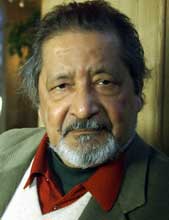 "For
too long Hindu nationalism had been cowed; it was now finding its true voice,
and this resurgent yearning can only be good"
- V.S. Naipaul (Nobel
Laureate) on Babri Demolition. "For
too long Hindu nationalism had been cowed; it was now finding its true voice,
and this resurgent yearning can only be good"
- V.S. Naipaul (Nobel
Laureate) on Babri Demolition.
***
If
there is a clear winner in the vexatious dispute over the Ram Janmabhoomi, it is
Truth (satya), which has triumphed in the face of formidable obstacles
placed by cussed political actors nurturing communal votebanks, aided and
abetted by an army of rapidly secular (read viciously anti-Hindu) fellow
travellers in media, academia, and of course, the west-centric
activists/busybodies. The judgment has taken
the friendless Hindu community towards closure, even though the verdict divided
the land among the Hindu Mahasabha, Nirmohi Akhara, and Sunni Central Waqf
Board. The central dome where Ram Lalla Virajman is housed has been given to the
Hindu Mahasabha.
Justice D.V. Sharma further ruled that the building constructed by emperor Babur
was built against the tenets of Islam (being a place of dispute) and did not
have the character of the mosque (being without minarets).
It was constructed
over a massive Hindu religious structure as proved by the Archaeological Survey
of India; Hindus have been worshipping the place as Janm Sthan (birthplace) and
making pilgrimages there from time immemorial.
Justice
Aggarwal noted there was no clear evidence when the mosque was built and by
whom, but it existed when Joseph Tieffenthaler visited Oudh area between 1766 to
1771. Justice S.U. Khan agreed the mosque was built by Babur,
but on the ruins of a temple, and some temple material was incorporated in the
mosque.
The greatest
vindication at Ayodhya is of the Archaeological Survey of India, whose experts
work diligently to excavate and preserve the truth of our heritage in the face
of extreme nastiness from arid Lib-Left academicians who grab state funding and
western patronage to denigrate India’s civilisation and culture.
Supreme Court
direction in 2003, the ASI worked under the glare of a
hostile media
disinformation campaign, to unearth the truth that recovered the Ram Janmabhoomi
as a Hindu heritage and validated Hindu civilisational memory.
(Refer to
The Unbearably Sickening Indian Pseudo-secular Press - By Atanu Dey -
deesha.org).
R efer to
Kashmir Hindus: Forsaken, forgotten for 21 years
- By Lalit Koul and
Ethnic Cleansing of Kashmiri Pandits: The
Nastiest Fascia Of Islamic Terrorism -
By Dipin Damodharan
The Muslim community would do well to resist overt and
covert incitement by badly beaten and bruised
secular fundamentalists who could barely conceal
their rage in television studios.
(source:
Ayodhya: Triumph of Truth
- By Sandhya Jain - vijayvaani.com). Refer to
Indian Media's War on Hinduism -
by Swami
Jyotirmayananda
and
Indian media's credibility crisis and
Little support for Rajdeep Sardesai's defence of tainted journalists -
deccanherald.com
Ayodhya Verdict and History
"When a man has begun to be ashamed of his ancestors and his past, the end has
come"-
Swami
Vivekanand.
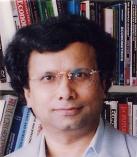 Professor in International Economics in Nagasaki University, Japan
has written:
Professor in International Economics in Nagasaki University, Japan
has written:
Ram as Historical Person
Ram was mentioned not only in
Valmiki"s Ramayana,
but also in
Vyas"s Mahabharata
at four places -- Ramopakhayan, Aaranyak Parva, Drona Parva and Dashrath
Kathanak. In Rig Veda (10.60.4.4), there is a mention of Iksvaku, the ancestor
of Ram and the founder of Ayodhya. The Atharva Veda mentions Ayodhya as having
nine gates. The Atharva Veda (18.3.16) mentions the name of Vishwamitra,
Vashista the preceptor of Ram, and Bhardwaj.
According to ancient Indian chronology and Puranic tradition Ram was born in the
24th Treta Yuga (Great Age).
The Valmiki Ramayana
(Bal Kanda 18.8.9) mentions at the time of Lord Ram"s birth as "the ninth lunar
day of the bright fortnight of Chaitra, Punarvasu was in the ascendant and five
planets (the Sun, Mars, Saturn, Jupiter and Venus) appeared in the zodiacal
signs of Mesa or Aries, Makara or Capricorn, Tula or Libra, Karka or Cancer, and
Mina or Pisces respectively. Jupiter in conjunction with the Moon appeared in
Karka. From these, it is possible to calculate that Ram was born on January 10,
5114 BC, which means to say 7,122 years ago.
Refer to
Was Lord Ram really born
According to Vedas, the world is 4.32 billion years old, and man arrived on
earth approximately two billion years ago. Man was created on earth in the
seventh manmantar of Vaivasvat Manu. The sun, planets, stars, earth, sea,
vegetation, flora and fauna were created in the earlier six manmantars. Western
scholars now agree that the earth is aged between 3.96 and 4.3 billion years.
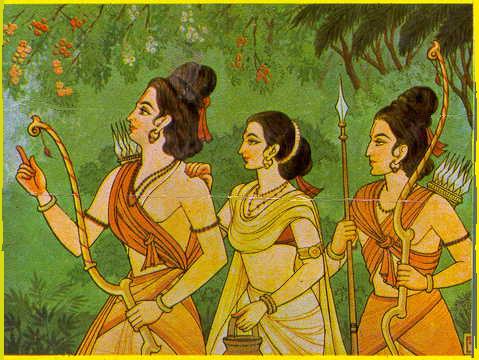
Thus, it is most unscientific to rule out Ramayana,
Mahabharata and Purana as just myths, but not informal history of the ancient
India.
"Whoever has done or willed too much let him
drink from this deep cup a long draught of life and youth........Everything is
narrow in the West - Greece is small and I stifle; Judea is dry and I pant. Let
me look toward lofty Asia, and the profound East for a little while. There lies
my great poem, as vast as the Indian ocean, blessed, gilded with the sun, the
book of divine harmony wherein is no dissonance. A serene peace reigns there,
and in the midst of conflict an infinite sweetness, a boundless fraternity,
which spreads over all living things, an ocean (without bottom or bound) of
love, of pity, of clemency."
-
Jules Michelet
(1798 -1874) French historian first and enduring impression made by
The Ramayana
***
Ayodhya controversy could not have taken place if the
Muslims acknowledged this historical fact.
In Europe, epics of Homer and The Bible are not considered as myths, but
informal history. The ruin of Troy, described by Homer, is already excavated.
Israel government made serious efforts to excavate every places mentioned in The
Bible to find out its ancient past. In India as well, S.R. Rao, former chief of
the Archaeological Survey of India, has discovered the ruins of
Dwarka
submerged in water off the coast of Gujarat. Japanese ground Radar Company
Tojo-Vikas has found out ruins of huge places 30 meter under the ground of
Ayodhya.
Thus, it is most unscientific to rule out Ramayana,
Mahabharata and Purana as just myths, but not informal history of the ancient
India.
***
The verdict of the
Lucknow Bench of the Allahabad High Court
agreed on three important issues: Muslims do not have exclusive claim to the
site held sacred by Hindus; the ground where the central dome of the Babri
Masjid stood belongs to Ram Lalla as has been argued for centuries by Hindus who
believe it is Ram Janmabhoomi; and, a temple existed at the spot that was
selected by Mir Baqi to build a mosque to celebrate Babur's victorious
military campaign in the region. On the third point, two of the three judges
also agreed that the temple was desecrated and destroyed to build the mosque;
one of them held this to be un-Islamic, a point validated by Islamic theology.
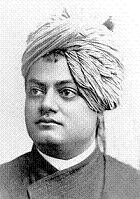 Do the Muslims
go to the court to establish their faiths regarding Mecca, Medina, and Jerusalem
(where the Prophet went by flying to establish the Dome of the Rock)? Do the
Christians ever go to
the court to establish their faith regarding Nazareth, or Bethlehem or
Jerusalem? The Court has nothing to do with the faith. It is a great insult for
the Hindus that the court is deciding whether their faith is valid or invalid. Do the Muslims
go to the court to establish their faiths regarding Mecca, Medina, and Jerusalem
(where the Prophet went by flying to establish the Dome of the Rock)? Do the
Christians ever go to
the court to establish their faith regarding Nazareth, or Bethlehem or
Jerusalem? The Court has nothing to do with the faith. It is a great insult for
the Hindus that the court is deciding whether their faith is valid or invalid.
Swami Vivekanand
said,
"When a man
has begun to be ashamed of his ancestors and his past, the end has come".
According to the
Pseudo-Secularists of India,
62 academics and journalists who have signed a petition against the Allahabad
High Court verdict,
Ramayana, Mahabharat, Purans are nothing but mythology and
the
rights of the Mongol invaders are sacrosanct.
Historical Evidences:
There are enough archeological evidence to demonstrate that the Mosque in
Ayudhya was erected by destroying a temple, which was there, and the materials
from the temple was used to build that Mosque by
Baber, the Mongol invader to India.
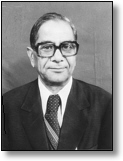 Some excerpts from the book "Rama:
His Historicity, Mandir and Setu, Evidence of Literature, Archaeology and other
Sciences"
written by
Dr B B Lal, Former Director General of the Archeological Survey of
India would prove beyond doubt that there was a temple in the Janmabhoomi (birth
place of Ram) area at Ayodhya preceding the construction of the Babri Masjid. Some excerpts from the book "Rama:
His Historicity, Mandir and Setu, Evidence of Literature, Archaeology and other
Sciences"
written by
Dr B B Lal, Former Director General of the Archeological Survey of
India would prove beyond doubt that there was a temple in the Janmabhoomi (birth
place of Ram) area at Ayodhya preceding the construction of the Babri Masjid.
"Attached to the piers of the Babri Masjid there were twelve stone pillars which
carried not only typical Hindu motifs and moldings but also figures of Hindu
deities (Figs. 2.3).
It was self evident that these pillars were not an integral part of the Masjid
but were foreign to it. Since, as already stated, the pillar-bases were
penetrating into the Masjid complex, a question naturally arose whether these
bases had anything to do with the above-mentioned pillars affixed to the piers
of the Masjid. (pp-55)."
"Of the above mentioned three inscriptions, the largest one is engraved on a
stone-slab measuring 1.10 x .56 meters, and consists of twenty lines. The
relevant part of it reads as follows: a beautiful temple of Vishnu-Hari, built
with heaps of stones and beautified with a golden spire unparalleled by any
other temple built by the earlier kings was constructed."
Babar"s own voluminous memoirs, "The
Baburnama"
gives us an insight into the mind and activities of the Moghul / Turkish
conqueror. Originally written in Chaghatay (a dialect of Turkish), two English
translations of the book are available. The first one was by
Annette Beveridge
and published between 1912 & 1921.
The second and more authoritative version, "The
Baburnama: Memoirs of Babur, Prince and Emperor"
was translated, edited and annotated by
Wheeler M. Thacktson
and published by the Oxford University Press in 1996. Babur"s stayed in Ayodhya
from April to September of 1528.
Baber wrote, "Chanderi had been in the daru"l-harb [Hindu rule] for some years
and held by Sanga"s highest-ranking officer Meidini Rao, with four or five
thousand infidels, but in 934 [1527-28], through the grace of God, I took it by
force within a ghari or two, massacred the infidels, and brought it into the
bosom of Islam ..." (p. 331)
"For the sake of Islam I became a wanderer;
I battled infidels and Hindus."
"I determined to become a martyr.
Thank God I became a holy warrior."
(p. 387)
"Hindustan is a place of little charm. ... The one nice aspect of Hindustan is
it is a large country with lots of gold and money."
(source:
Mother Teresa had plans for Ayodhya: Kolkata priest and
Jesus Bluff The Universal scandal of the world - By Hans Atrott
Without
Hindus, there can be no India.'
Freeing India's Colonized mind
***
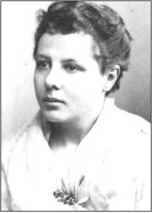 Annie Wood Besant
(1847-1933) was an active socialist on the executive committee of the
Fabian Society along with
George Bernard Shaw. George Bernard Shaw regarded her the "greatest
woman public speaker of her time." Was a prominent leader of India's freedom
movement, member of the Indian National Congress, and of the Theosophical
Society. She was also fundamentally instrumental in freeing the country she lost
her heart and sublimed her soul to: India. Besant is an indivisible part of the
composite struggle for independent India because she declared most passionately: Annie Wood Besant
(1847-1933) was an active socialist on the executive committee of the
Fabian Society along with
George Bernard Shaw. George Bernard Shaw regarded her the "greatest
woman public speaker of her time." Was a prominent leader of India's freedom
movement, member of the Indian National Congress, and of the Theosophical
Society. She was also fundamentally instrumental in freeing the country she lost
her heart and sublimed her soul to: India. Besant is an indivisible part of the
composite struggle for independent India because she declared most passionately:
She said on India and Hinduism :
"After a
study of some forty years and more of the great religions of the world, I find
none so perfect , none so scientific, none so philosophical and none so
spiritual that the great religion known by the name of Hinduism.
Make no mistake, without Hinduism, India has no future.
Hinduism is the soil in to which India's roots are
stuck and torn out of that she will inevitably wither as a tree torn out from
its place. And if Hindus do not maintain Hinduism who shall save it? If
India's own children do not cling to her faith who shall guard it. India alone
can save India and India and Hinduism are one. "
(source:
India: Essays and Lectures Vol. IV - By Annie Besant The Theosophical
Publishing Co. London. 1895 p. 11).
***
India's Colonized mind and its myths
It was the felicity of the
British mind that consigned
so much of ancient Indian history to the dustbin of myth, from the treasure
chest of history. Not wanting to acknowledge the equality-at the least-of Indian civilisation with that of ancient Greece and Rome, historians of the colonial
school (including several indian nationals) have consistently denied the reality
of the existence of Lord Ram. It is in such a context that
Justice S U Khan has
shown himself to be an Indian unscarred by the inferiority complex created by
the acid found within the colonised mind.
What needs to be condemned is the attitude of successive governments in "free"
India to Sri Ram. Rather than celebrating Him in history textbooks, rather than
learning from His life in civics classes, rather than using the logic of His
epoch to weave a path through the present, our governments have each accepted
the colonial sleight-of-hand and continued to consign Sri Ram to the status of
myth. It is an indication of the grip of the colonised mind within
our chatterati that so many have expressed
shock that Sri Ram could have been taken as an authentic figure.
All citizens of India should rally together to defeat the still-strong vestiges
of the colonised mind in our scholastic and cultural life, and thereby prove the
truth.
A month ago, this columnist visited Stonehenge in the UK, and saw for himself
the care with which this ancient treasure has been preserved and celebrated.
Had the British been infected with the acid found in a
colonised mind, they would have considered Stonehenge to be a freak of nature,
and allowed it to remain in neglect. Instead, they have ensured that it be given
an honoured place in the many cultural and historic treasures found in the
country that gave the world the Magna Carta more than a millenium ago. Sadly,
here in India, no effort has been made to identify and protect the numerous
sites associated with Sri Ram. How wonderful it would have been, if
we could visit a replica of the dwelling that Sita and He stayed in, while in
exile. How much respect for our own heritage would have been boosted, if we were
enabled to trace His journey to Lanka, an island where-surprisingly-sites exist
that are associated with the exploits immortalised in the Ramayana. Instead, we
accept the fiction that Sri Ram was a myth, and that therefore he could not have
been born.
It is not accidental that the cacophony against the
Allahabad High Court verdict has two strands joined in partnership.
One is of course the Nehruvian representatives of the colonised mind, who cannot
accept that any person as noble as Sri Ram could have been actually born in this
country. The others are the Wahabbis, who are the standard-bearers of the
colonised mind within the Muslim community.
What is needed is an organised movement (that cuts across communities) to
re-create the sites that are associated with Sri Ram, in the same manner in
which the British have protected Stonehenge and the Chinese have (largely)
recreated the Great Wall. What is needed is for the nation to understand that
Sri Ram is to Indians what Alexander is to the Greeks and Julius Ceasar is to
the Romans.
(source:
India's colonised mind and its myths
-
By MD Nalapat - orgainser.org). Refer to
India on Verge of ‘Cultural Ecocide’: Sanskrit Scholar
Imagined Histories
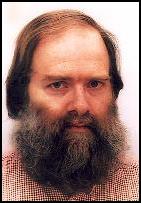 "While politically expedient, and while going
unchallenged in the academically most consequential forums for twenty years,
that position has now been officially declared false. It suddenly dawns on them
that they have tied their names to an entreprise unlikely to earn them glory in
the long run. We may now expect frantic attempts to intimidate the Supreme Court
into annulling the Allahabad verdict, starting with the ongoing signature
campaign against the learned Judges’ finding; and possibly it will succeed. But
it is unlikely that future generations, unburdened with the presently prevailing
power equation that made this history denial profitable, will play along and
keep on disregarding the massive body of historical evidence. With the Ayodhya
verdict, the eminent historians are catching a glimpse of what they will look
like when they stand before Allah’s throne on Judgment Day.” "While politically expedient, and while going
unchallenged in the academically most consequential forums for twenty years,
that position has now been officially declared false. It suddenly dawns on them
that they have tied their names to an entreprise unlikely to earn them glory in
the long run. We may now expect frantic attempts to intimidate the Supreme Court
into annulling the Allahabad verdict, starting with the ongoing signature
campaign against the learned Judges’ finding; and possibly it will succeed. But
it is unlikely that future generations, unburdened with the presently prevailing
power equation that made this history denial profitable, will play along and
keep on disregarding the massive body of historical evidence. With the Ayodhya
verdict, the eminent historians are catching a glimpse of what they will look
like when they stand before Allah’s throne on Judgment Day.”
-
Dr. Koenraad Elst
author of
Negationism in India
***
The court watched a parade of the good, the bad and the ugly
It is correct
that in Sikh literature there is a tradition that Guru
Nanak had visited Ayodhya, had darshan of
Ram Janmasthan and had bathed in the River Saryu.”
***
When the history of the Ayodhya movement comes to be written, there will be the
inevitable search for heroes and villains.
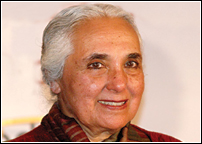 An exploration of the voluminous judgment of the judge, Sudhir Agarwal, is
pertinent in the context of a determined bid by India’s vocal left-wing
intelligentsia to rubbish the judgment as a departure from modernity,
constitutionalism and the rule of law. In a statement by 61 ‘intellectuals’ led
by the historian,
Romila Thapar, that includes the cream of the left-liberal
establishment and sundry art dealers, photographers and food critics, the
judgment was attacked for dealing yet “another blow to India’s secular fabric”. An exploration of the voluminous judgment of the judge, Sudhir Agarwal, is
pertinent in the context of a determined bid by India’s vocal left-wing
intelligentsia to rubbish the judgment as a departure from modernity,
constitutionalism and the rule of law. In a statement by 61 ‘intellectuals’ led
by the historian,
Romila Thapar, that includes the cream of the left-liberal
establishment and sundry art dealers, photographers and food critics, the
judgment was attacked for dealing yet “another blow to India’s secular fabric”.
Refer to
Kashmir Hindus: Forsaken, forgotten for 21 years
- By Lalit Koul and
Ethnic Cleansing of Kashmiri Pandits: The
Nastiest Fascia Of Islamic Terrorism -
By Dipin Damodharan
At the heart of
the fury of the ‘intellectuals’ is the court’s assault on the reputation of the
clutch of ‘eminent historians’ which has dictated the ‘secular’ discourse on the Ayodhya dispute. The court questioned the competence of various ‘expert’
witnesses and cast doubts on their intellectual integrity.
In its conclusion, the ASI submitted that
“a massive structure with at least three structural phases and three successive
attached with it” was located at the disputed 2.77 acres in Ayodhya. The scale
of the buildings indicated that they were for “public” functions.
“It was over
the top of this construction during the early 16th century the disputed
structure was constructed directly resting over it.”
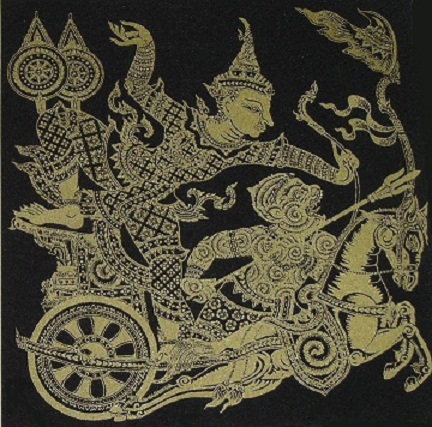
The Epics of Ramayana and
Mahabharata have both contributed in a big way to enrich the folklore of not
just India but most of South east Asia.
In Thailand, Ramayana dance-drama is the
national dance, an inheritance of the country ancient Hindu past, and the Thai
king traditionally models himself on Rama. Indonesia is famous for its shadow
puppet theatre depicting Ramayana.
(image source:
A Tribute to
Hinduism: Thoughts and Wisdom spanning continents and time about India and her
culture - By Sushama Londhe p. 30).
***
Without mincing
words, the ASI report had brushed aside the so-called Historians’ Report to the
Nation authored by the professors R.S. Sharma, M. Athar Ali, D.N. Jha and Suraj
Bhan released in May 1991. This document was a plea to the government of India
“to include impartial historians in the process of forming judgment on
historical facts”.
As an example of
this “impartial” history, it was argued that “the full blown legend of the
destruction of a temple at the site of Rama’s birth and Sita ki Rasoi is as late
as the 1850s. Since then what we get is merely the progressive reconstruction of
imagined history based on faith”.
Once the ASI excavations confirmed that the Babri Masjid wasn’t built on virgin
land, “impartial” history turned to imaginative history.
There were also suggestions, never proven or pressed, that the ASI had falsified
and suppressed data.
The court was not amused.
The judge, Agarwal, was “surprised to see in the zeal of helping… the parties in
whose favour they were appearing, these witnesses went ahead… and wrote a
totally new story” of a mosque under a mosque.
The judge was unaware of what constitutes “scientific” history in India.
 She (Suvira
Jaiswal)
was articulating
the prevailing philosophy of history writing in contemporary India. The courts
recoiled in horror at the “dearth of logical thinking” and the underlying
cronyism behind the public stands of India’s “eminent” historians. Quoting a
British Law Lord from an 1843 judgment, it suggested their expertise was “the
substance of things hoped for, the evidence of things not seen” — harsh words
that civil society needs to remember on the next occasion the “impartial”
historians strut on the public stage. She (Suvira
Jaiswal)
was articulating
the prevailing philosophy of history writing in contemporary India. The courts
recoiled in horror at the “dearth of logical thinking” and the underlying
cronyism behind the public stands of India’s “eminent” historians. Quoting a
British Law Lord from an 1843 judgment, it suggested their expertise was “the
substance of things hoped for, the evidence of things not seen” — harsh words
that civil society needs to remember on the next occasion the “impartial”
historians strut on the public stage.
(source:
Imagined histories – By Swapan Dasgupta).
Refer to
Islam: Arab Imperialism - By Anwar
Sheikh
Refer to chapters on
Sacred Angkor and
Suvarnabhumi.
Also refer to
Eminent Historians: Their Technology, Their
Line, Their Fraud
- By Arun Shourie
Comments on the article: "The Historians report to the Nation
is an insult to all Indians, and all followers of the scientific method. This is
akin to the Creationism and anti-global warming movement in the US, where
personal opinion is confused with scientific fact, in this case by people
strangely on the right side of the aisle in that country."
"Eminents" of the Cult of
Historians are miffed
Coming back to the Ayodhya judgment. What has
miffed these "History and Archeology" experts and which has really ticked them
off is that the Allahabad High Court and Archeological Survey of India clearly
and unequivocally cooked their goose by ordering the excavations at the site
(source:
Cult of Eminent Indian Historians and the Ayodhya verdict
-
Drishtikone).
Dr Koenrad Elst opined that
Lord Buddha was never a rebel against the Hinduism, even Sikh
religion founder Guru Nanak says, he is
direct dissident of Sri Rama. The pseudo-secularists says, "the site which was
called as Rama’s birth place is not original one, but Vikramaditya picks any
land in his territory and announces it is the birthplace and builds a temple
there. After Vikramaditya, the ayodhya was the centre of learning of Buddhists
and was a one of intellectual capital of India.
The archaeologist experts have accepted that the Mosque was not in the style of
Mughal. In the Muslim documents itself, the name of masjid is written as
Masjid-e-Janmasthan. There are many Muslims who accepts the place is birthplace
of Ram, says Dr Koenrad Elst. Concluding his speech, he said, according to
Islamic belief, if idols are worshipped at a place, it ceases to be a mosque.
(source:
Left historians reprimanded - Dr
Koenraad Elst -
By S Chandrasekhar).
Slap in the face of 'Eminent Historians
"Hinduism has admittedly been the least politically minded among religions;
otherwise the history of India would have been altogether different"
-
K. Guru Dutt author of
Hindu Sadhana.
***
"Today I
feel sorry for the Eminent Historians" – Dr Koenraad Elst
Regardless of the true
meaning and significance of the court ruling on the Ayodhya dispute, one point
is clear. It is a well deserved slap in the face of
Romila Thapar, R.S. Sharma,
K M Shrimali, D N Jha, Amiya Kumar Bagchi, Kesavan
Veluthat, Amar Farooqui, Utsa Patnaik and
Farhat Hasan and their ilk
arguing there was no temple at the site.
They will now try to go into hiding but they should be brought before the public
and exposed as charlatans. They have been shown as double falsifiers--
The Aryan
invasion and now the Ayodhya fiasco.
Koenraad Elst wrote in his
Negationism in India when the truth comes
out these Negationists will not be able to show their faces in public. Let us
make sure that this happens by not letting the the public forget treacherous
role played by these charlatans and Quislings.
Their imposture and false assurances was responsible for much of the Muslim
intransigence and the bloodshed. These 'eminent historians' have innocent blood
on their hands.
(source:
Slap in the face of 'Eminent Historians - By N S Rajaram).
Refer to
Islam: Arab Imperialism - By Anwar
Sheikh
***
Ram Ki Nagari, once again
A mosque, a
temple and a court verdict in India
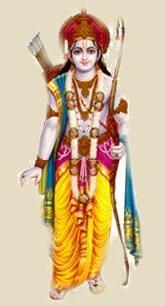 It is a sordid tale of conquest, destruction, inter-religious conflict and
bloodshed. And India was on edge as the verdict was delivered this afternoon.
The remarkable decision was as bold in its breadth and scope, as muted as it was
in its final order. The three judge panel--two Hindus and one Muslim--declared
that yes, a temple existed at the site before Babar destroyed it and built his
edifice incorporating portions of the temple in his own structure. Yes, the site
is the exact locus that Hindus have revered as the birth site of Lord Rama since
"time immemorial," who was a "juristic person" and was born thousands of years
prior. And yes, Hindus have a right to build a temple on the site. It is a sordid tale of conquest, destruction, inter-religious conflict and
bloodshed. And India was on edge as the verdict was delivered this afternoon.
The remarkable decision was as bold in its breadth and scope, as muted as it was
in its final order. The three judge panel--two Hindus and one Muslim--declared
that yes, a temple existed at the site before Babar destroyed it and built his
edifice incorporating portions of the temple in his own structure. Yes, the site
is the exact locus that Hindus have revered as the birth site of Lord Rama since
"time immemorial," who was a "juristic person" and was born thousands of years
prior. And yes, Hindus have a right to build a temple on the site.
First the basics: In 1528, Zahir-ud-din Babar, the first Islamic ruler of large
parts of India, built a mosque on grounds held sacred by Hindus as the
birthplace of one of their most widely worshipped avatars, Lord Rama--worshipped
beyond India throughout South Asia, and venerated hero of the Hindu epic, the
Ramayana. A massive Hindu temple complex at that site was destroyed by Babar to
make way for the mosque.
So those are
the facts, but as the 8,000 page verdict was sent on to New Delhi, Hindus may
sigh with satisfaction even as the press will move on to details of appeals that
will be filed and the political ramifications.
Churchill claimed history is written by the victors, and India's, ironically, is
shaped by a millenium of
Islamic and then
British
conquests. But the facts laid out in
this decision add a dimension of veracity to the faith of Hindus usually
disputed by India's famously far-left historians.
Many have argued that it is the very disenfranchising of Hindus from the
historical contentions of their scriptures that fuels disaffection and the
fodder for demagoguery.
Lord Krishna
and Lord Shiva, along with Lord Rama, are prominent players in the Hindu
pantheon. Seek out their most revered temples and sacred spaces, in Mathura
where Krishna was born, and Kashi, the holy city of Shiva, and massive mosques
built by conquerors still mark the spots. Several
thousand temples were destroyed throughout India by the marauding Mongol, Babar,
and those that followed him in the 15th and 16th century following
the example of Babar's immediate Turk predecessor, Sultan Mehmed II, who was
busy laying siege to the Hagia Sophia, the focal point of Eastern Orthodox
Christianity in Constantinople just a few decades earlier. This is not to say
that history must be reversed in every corner of India--far from it.
But acknowledgement of an injustice is a necessary
first step, and an accomodation long denied to Hindus. The modern
Turkish government, after all, had the
courage to turn the destroyed Hagia Sophia
site into a museum acknowledging a disputed past.
The prevailing response for Hindus, then, is vindication.
Babar is a reviled figure in Hindu lore, and now the world
knows why. Hindu Americans had long chafed reading modern historical renderings
of an "alleged temple" to the
"warrior god Ram"; of fawning accounts from
the notoriously "pseudosecular" Indian
academy of Babar's mosque and their highly
"authoritative" claims, parroted in the Western media.
It was astounding that despite copious evidence unearthed by the
Archaeological Survey of India,
these same historians and politicians refused to concede that Babar had actually
destroyed a massive Hindu temple, one of the holiest for Hindus, and built a
conquest monument he called a mosque.
Lord Rama is
almost always rendered as an ahistorical mythological character set in an
interesting epic--the judgment terming him a "juristic person," is given in
syntax as clumsy as it is empowering. He existed, Hindus can claim with a legal
imprimatur, and his birthplace is as real and important
as Bethlehem, the Temple Mount or Mecca. It is a jejune claim that a
legal judgement affects the faith of a billion Hindus, but Hindus rarely find
their faith corroborated in the cold renderings of history or law.
(source:
A mosque, a temple and a court verdict in India - By Dr. Aseem Shukla).
Refer to
Ram Ki Nagari, once again – By Kanchan Gupta
Ayodhya Verdict
leaves ‘secular intellectuals’ aghast
 Sagarika Ghose
(1964 - ) is an Indian secular journalist, author (The
Gin Drinkers)
and television anchor
calls:
Sagarika Ghose
(1964 - ) is an Indian secular journalist, author (The
Gin Drinkers)
and television anchor
calls:
"Lord Ram – a divine
encroacher"?
Refer to
Kashmir Hindus: Forsaken, forgotten for 21 years
- By Lalit Koul and
Ethnic Cleansing of Kashmiri Pandits: The
Nastiest Fascia Of Islamic Terrorism -
By Dipin Damodharan
***
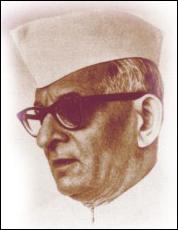 Dr. K. M. Munshi
(1887 - 1971) A
freedom fighter, Committee of the
Indian National Congress. He founded
Bharatiya Vidya Bhavan in 1938 with the
blessings of Mahatma Gandhi. He ceaselessly strove for cultural and spiritual
regeneration. He
has
drawn our attention to the harm several European scholars have intentionally
done to Hindu culture: He laments how the failures of Hindus have been
highlighted and how their successes have been
consistently ignored: Dr. K. M. Munshi
(1887 - 1971) A
freedom fighter, Committee of the
Indian National Congress. He founded
Bharatiya Vidya Bhavan in 1938 with the
blessings of Mahatma Gandhi. He ceaselessly strove for cultural and spiritual
regeneration. He
has
drawn our attention to the harm several European scholars have intentionally
done to Hindu culture: He laments how the failures of Hindus have been
highlighted and how their successes have been
consistently ignored:
“It (history) does not give us the real India. … During
our school or college career, generation after generation were told about the
successive foreign invasions of the country, but little about how we resisted
them and less about our victories. We were taught to decry the Hindu social
systems; but we have never been told how
this system came into existence as a synthesis of political, social, economic
and cultural forces; and how it developed in the people the tenacity to survive
catastrophic changes.”
(source:
History of Ancient India: Distorted and
Mutilated).
***
 Some of the outburst was predictable. Those whom Arun
Shourie dubbed the "eminent'
historians
were understandably agitated that the High Court judges had the effrontery to
discount their 'no-temple-ever' assertions in favour of the evidence culled by
the Archaeological Survey of India. Their
spirited attempt to reclaim the mantle of sole spokesmen for India's past was
understandable. If the courts discount their fatwas, it was only a matter of
time before the stifled voices of other historians would make their departmental
dominance more fragile. Some of the outburst was predictable. Those whom Arun
Shourie dubbed the "eminent'
historians
were understandably agitated that the High Court judges had the effrontery to
discount their 'no-temple-ever' assertions in favour of the evidence culled by
the Archaeological Survey of India. Their
spirited attempt to reclaim the mantle of sole spokesmen for India's past was
understandable. If the courts discount their fatwas, it was only a matter of
time before the stifled voices of other historians would make their departmental
dominance more fragile.
Also following the script was the apoplectic fury
of those who had hitherto been the respectable face of secularist modernity.
Their apprehension was any possibility that the Hindu
and Muslim leaderships would cut a deal above their heads and make redundant
their franchise to speak on behalf of the minority. For two days and courtesy
some TV channels, the secular modernists attempted to whip up Muslim opinion
against the judgment and use the community's apparent displeasure to force the
Government into using its proverbial "good offices" with the Supreme Court. The
overall idea is to build up an intellectual climate so forceful that the Supreme
Court would think it prudent to overturn the High Court judgment.
The provocative, self-preservation tactics of the
thekedars of
conflict—one 'secular' lady said that the
Indian state no longer had a social contract with Muslims, an assertion that
could well be construed as legitimising terrorism—would have certainly had a
disorienting effect had it been backed by community pressure.
Without mincing words, the professional secularists are
trying to create a fresh communal schism by nurturing minority victimhood. It's
a very dangerous game.
(source:
Verdict leaves ‘secular intellectuals’ aghast - By Swapan Dasgupta -
dailypioneer.com). Refer to
Unholy Trio: Nira Radia, Barkha Dutt, Vir
Sanghvi
-
vijayvaani.org
Hinduism -
An enabling way
of life
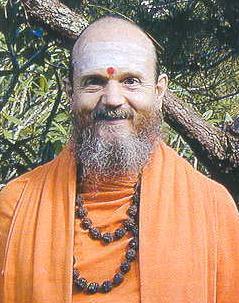 Satguru
Bodhinatha Veylanswami
(1942 - ) When Satguru Sivaya Subramuniyaswami attained mahasamadhi,
his great departure, on November 12, 2001, he designated Bodhinatha Veylanswami,
a disciple for 37 years, as his successor. He was interviewed recently: Satguru
Bodhinatha Veylanswami
(1942 - ) When Satguru Sivaya Subramuniyaswami attained mahasamadhi,
his great departure, on November 12, 2001, he designated Bodhinatha Veylanswami,
a disciple for 37 years, as his successor. He was interviewed recently:
Who, would you
say, is a Hindu?
My guru Satguru Sivaya Subramuniya Swami would define
Hinduism
as belief in karma, reincarnation, and the all-pervasiveness of
divinity.
He would say if you believed in these three essentials, you were Hindu.
Interestingly, many people in the West believe in these essentials without being
aware of their Hindu roots.
Would Hinduism help us deal with the challenges we face in
a globalised world?
Hinduism is providing useful global models. The one we often use is the concept
of vasudhaiva kutumbakam — the whole world is a family — meaning that we are to
take care of each and every one, regardless of religion, language or region.
Like aerobics or any other exercise for that matter, you need to practice
Hinduism in your daily life to reap its benefits. Take the example of the Hatha
Yoga tradition; followed regularly, it can relieve you of everyday stress.
What kind of daily practices would you recommend?
Our emphasis is on devotional practices. Ideally, people should offer a small
prayer
in the morning before leaving for work — it's great if the family can pray
together in the home shrine; this way, the children acquire the habit of praying
daily.
Going to the temple once a week is strongly recommended. In the West, where
there isn't always a temple close by, we recommend making the effort to go to a
temple at least during festive seasons. You could go on a tirtha yatra or
pilgrimage at least once a year. Before going on a pilgrimage, a period of
self-purification does one good.
An important aspect of Hinduism is dharma, or virtuous living. The focus of
dharma is to uphold the 10 yamas or ethical restraints. They include ahimsa or
non-injury to fellow beings; satya or truthfulness; asteya or non-stealing;
brahmacharya or sexual purity; kshama or forgiveness; dhriti or steadfastness;
daya or compassion; arjava or honesty and straightforwardness; mitahara or
vegetarianism and moderation in eating; and shaucha or purity.
Observance of traditional rites of passage, called samskaras are equally
important. At these ceremonies, an individual receives the blessings of God, the
guru, the family, and the community at crucial stages of life. They include the
namakarana, the name-giving ceremony, annaprashana — or the first feeding of
solid food, vidyarambha or initiation into education, vivaha or marriage, and
antyeshthi, the funeral rites. These have been referred to as the pancha nitya
karmas or the five eternal practices by Satguru Subramuniya Swami.
Hinduism is a way of life. It's not confined to what we do in the shrine; it
includes everything — most importantly our interactions with others. Hinduism is
a free-flowing religion and offers you much that could interest you.
Do you see any change in people's perception of Hinduism?
Hinduism is a misunderstood religion. Two of the commonly misunderstood notions
are that Hindus believe in idol worship and in a multiplicity of gods without
any one being Supreme. Some of our literature addresses these issues.
The new
generation might not have had as much exposure to Hindu tenets as earlier
generations have. What would be a good way to revive interest in Hindu
philosophy?
We don't run hospitals or schools, but we've been bringing out a quarterly
magazine called Hinduism. Today that attempts to share valuable insights of the
faith with readers. But whatever we do or write, we cannot replace parents who
should ideally be sharing these values with their children, both by example and
instruction. We can, at the most, help them to become more aware of the tenets
of faith and increase their understanding of scriptures and rituals.
Hinduism does not set forth a set of rules of dos and don'ts. Hinduism provides
interesting tools that help you access the core of your being. Once you are able
to do that, leading a happy and contended life would not seem all that
difficult.
(source:
Hinduism -
An enabling way of life -
hinduismtoday.com).
Japanese couple
weds Hindu style in Bodh Gaya
A
Japanese couple tied the knot in Bihar's Bodh Gaya, a holy town for Buddhists,
in Hindu style to send a message of peace and harmony to the world.
"We came to Bodh Gaya all the way from Tokyo to get married to send the message
of love, peace and harmony," the couple said.
Massako Kawada, 31, clad in traditional red saree, wedded 32-year-old Kazenori
Araki Thursday amid much fanfare at a temple in Bodh Gaya, about 110 km from
Patna.
"The marriage was solemnized with the bride and groom taking the ritualistic
seven rounds of the fire and the groom applying vermilion in her (bride) hair
parting," Shreekant Pandey, a local Hindu priest who conducted wedding, told
reporters over telephone. The
ceremony was attended by close relatives of the bride and the groom, some
tourists and locals.
(source:
Japanese couple weds Hindu style in Bodh Gaya
- ndtv.com).
The Case Against Lord Krishna in Poland
 With
the rapidly spreading Hinduism worldwide, a nun in Warsaw, Poland, filed a case
against ISKCON (International Society for Krishna
Consciousness). The case came up in court. The nun remarked that
ISKCON was spreading its activities and gaining followers in Poland. She wanted
ISKCON banned because its followers were glorifying a character called 'Krishna'
"who had loose morals," having married 16,000 women called Gopikas. With
the rapidly spreading Hinduism worldwide, a nun in Warsaw, Poland, filed a case
against ISKCON (International Society for Krishna
Consciousness). The case came up in court. The nun remarked that
ISKCON was spreading its activities and gaining followers in Poland. She wanted
ISKCON banned because its followers were glorifying a character called 'Krishna'
"who had loose morals," having married 16,000 women called Gopikas.
The
ISKCON defendant requested the Judge: "Please ask the nun to repeat the oath she
took when she was ordained as a nun." The Judge asked the nun to recite the oath
loudly. She would not. The ISKCON man asked permission if he could read out the
oath for the nun. Go ahead, said the judge. The
oath said in effect that the nun is married to
Jesus Christ.
The
ISKCON man said, "Your Lordship! Lord Krishna is
alleged to have 'married' 16,000 women only. There are more than a million nuns
who assert that they are married to Jesus Christ. Between the two, Krishna and
Jesus Christ, who has a loose character? And what about the nuns?"
The case was dismissed.
(source:
The Case Against Lord Krishna in Poland).
Hindus want
Diwali as school holiday in Cambridge, MA
Hindus have
applauded Cambridge School Committee (Massachusetts, USA) for reportedly
declaring Eid as a school holiday from the next year in Cambridge Public
Schools. Well known Hindu statesman Rajan Zed, in a statement today, while
congratulating the Committee for including this additional holiday, urged it to
also add Diwali, the most important Hindu
holy day, to the holiday calendar. Zed, who is President of Universal Society of
Hinduism, called it "a step in the right direction". Awareness about other
religions thus created by these holidays would make the Cambridge Public
Schools' pupils well-nurtured, well-balanced, and enlightened citizens of
tomorrow, Zed said and added that it would make District look good also besides
bringing cohesion and unity in the community.
Zed further
said that since it was important for Hindu families to celebrate Diwali day
together at home with their children, we did not want our children to be
deprived of any privileges at the school because of thus resulting absences on
this day. According to Zed, Diwali, the festival of lights, aims at dispelling
the darkness and lighting up the lives and symbolizes the victory of good over
evil. Hindus worship goddess of good fortune and beauty Lakshmi, god of wisdom
and auspiciousness Ganesh, and mountain Goverdhan on this day. Also on this day,
coronation of Lord Ram was held, Lord Hanuman was born, Lord Vishnu returned
kingdom to monkey king Bali of Kiskindha, Lord Vishnu and goddess Lakshmi
married, Lord Krishan killed demon Narakasur, and ancient king Vikramaditya was
crowned. On this day of forgiveness, festivities, and friendliness; families and
friends get together for worship followed by a sumptuous and elaborate feast. It
is also considered a harvest festival. In 2011, it falls on October 26.
Cambridge
public schools had already declared First Day of Rosh Hashanah (September nine),
Christmas Eve (December 24), and Good Friday (April 22) as holidays during the
current school year. It has 12 elementary schools and one comprehensive high
school serving about 6,000 students, and employs over 700 teachers and over 450
support personnel. School Committee, which determines overall School Department
policy and budget, is chaired by Cambridge Mayor David Maher; while Jeffrey M.
Young is District Superintendent. Oscar winner Hollywood stars Matt Damon, Ben
Affleck, Walter Brennan; Noble laureate Eric A. Cornell; Olympic Gold winners
Frank Hussey, Patrick Ewing, Charles Jenkins; former Treasury Secretary Donald
T. Regan; are some of the notable Cambridge Schools' alumni. Hinduism, oldest
and third largest religion of the world, has about one billion adherents and
moksh (liberation) is its ultimate goal.
(source:
Hindus want Diwali as school holiday in Cambridge, MA
-
sify.com).
Sabrimala temple
Sabarimala is
where Hindu God Lord Ayyappa meditated.
Temple is situated amidst 18 hills in the
Sahayadri range (Western
Ghat) at an altitude of 914 metres above sea level and four km from The River Pampa.
Ayyappa devotees visit the temple after 41 days of vrata. The temple is
surrounded by mountains and dense forests. Temples exist in each of the hills
surrounding Sabarimala. Devotees must go at least once in their lifetime.
Sabarimala pilgrimage is the world’s biggest annual pilgrimage and some 5 crore
devotees visit temple every year. Women between the ages of 10 and 50 are not
allowed to enter the temple as Lord Ayyappa is a Bramachari - a bachelor.
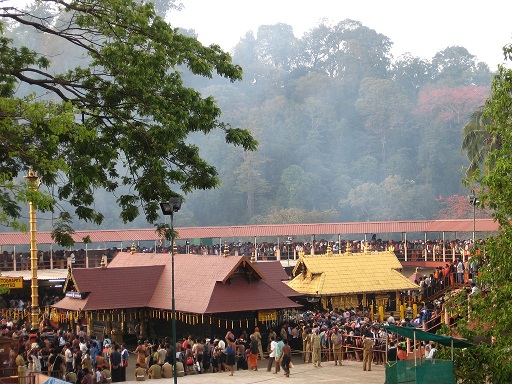
Sabarimala is where Hindu God Lord Ayyappa meditated.
Temple is
situated amidst 18 hills in the
Sahayadri range (Western
Ghat) at an altitude of 914 metres above sea level and four km from River Pampa.
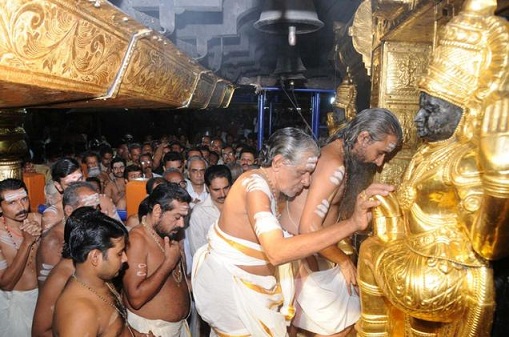
Worship of Lord
Ayyappa devotees visit the
temple.
Refer to
Kerala Christians Prevent Construction of Railway to Hindu Hill Shrine -
christianaggression.org
and
Malabar, 1811: The long road to freedom from slavery - By
N P Chekkutty
and
The St Thomas In India History Swindle
***
The important
message given at the temple is the ultimate knowledge that you are the God,
Tat Tvam Asi in Sanskrit meaning - That is
you and this is the reason why pilgrims call each other Swami. This is the same
message that was given by Sri Narayana Guru,
who is another saint of Kerala who installed a mirror as the idol of a temple.
The temple is surrounded by 18 hills, each with a temple. Today, remnants of
these temples are visible from the Sabarimala temple.
Tragedy at
Sabrimala
Conspiracy to destroy Hindu pilgrimage
On 14-1-2011
around 102 persons were killed in a stampede
in an unlit narrow forest road due to lack of proper arrangement by the
Kerala government that controls the Hindu pilgrim site at Sabarimala. This is a
repeat of history. In 1952 around 66 pilgrims died and in 1999 some 53 pilgrims
died in a stampede. Committee recommendations to avoid it were not implemented
till now. Hindu temples and pilgrimages sites should be in the hands of Hindus
away from the present control by anti Hindu communist and congress governments.
Politicians and the contractors linked to the
Travancore Devaswam Board loot the income of Sabarimala. There is no
water to drink for the pilgrims on the way, or has any facility to protect them
from elements, when they have to wait up to 12 hours in the queue.
The sacred Pampa river is polluted. There is
no facility for prompt disposal of garbage.
Criminal Negligence in
Kerala: Four policemen for one lakh pilgrims?
Kerala
Government is ruled by Anti-Hindu Communists
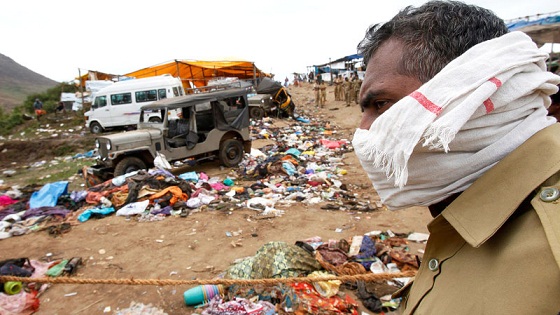
Tragedy strike again at
Sabrimala temple in Kerala.
According to P.T.Thomas. MP, there was a serious lapse on the part of the
security agency. 'There were more than a lakh pilgrims in the Pulumedu area and
there were just four policemen. The authorities have failed to provide proper
security in an area where such a huge crowd was there.' The Kerala Government
just wants money offered by the devotees visiting the Temples, but does not care
to provide proper facilities and amenities, and adequate security to pilgrims.
The same Govt. readily provides all types of facilities and security for Haj
pilgrims..
Refer
Over 102 dead in Sabrimala stampede
***
The present
tragedy appears to be a conspiracy to damage the Left parties prospects to get
elected in the coming election. The accident is very strange and appears to have
caused by a jeep that was pushed to start as its self start failed. The jeep
appears to ran over one pilgrim and caused some scuffle. This appears to have
caused a stampede, which is difficult to accept. There was a chain that tied
across the road that blocks any jeep travel along the forest road that is
normally left open by December 10, was not opened. It looks like the moving mass
of pilgrims started falling after hitting the chain across the road. The forest
area was not lit. There were earlier attempt to discredit the pilgrimage to
Sabarimala by the Christians. All said and done, there was hardly any proper
arrangement in an area where pilgrims are routinely gathered to watch the
Makara Vilakku.
Efforts to destroy the Sabarimala temple was started in 1950 by Kerala
Christians. The temple was set on fire by Christians to scare away the devotees.
The Christian lobby is involved in poaching
of trees and ganja cultivation in forest areas. When thousands started
visiting the
Sabarimala temple in the forest, their income dwindled and they set the temple
on fire. Between 1950 and 1955 there were three attempts to destroy the temple
and several attacks on pilgrims. In the eighties a communal Christian minister,
and the church brigade tried to construct a church near Nilakkal.
In 1983 Church brigade attempted to plant a Cross in
Nilakkal in Ayyappa’s garden. There was a
conspiracy to build Pampa Valley Dam
in Poonkavanam area which would have submerged the Sabarimala temple.
Forest land requested for Sabarimala development was not given. To stop
pilgrimage to Sabarimala Christians have started a vicious campaign against
Sabarimala pilgrimage for the last sixty years.
A 2000 year old wood will not survive burial in Kerala’s humid
earth and the racket was exposed. Pilgrims have to take
a dip in the Pampa river. But the river is highly polluted and the
Rs.320 crore Sabarimala Pamba Action Plan under the National River Conservation
Programme (NRCP) is yet to be completed. The Travancore Devasom Board (TDB)
controls the functioning of all temples in south Kerala including Sabarimala.
Government control of Hindu temples means looting by corrupt politicians from
all parties and the atheist government staff. This is vividly seen at Tirupati.
The late Christian Y Samuel Rajasekhara Reddy
put his Christian half brother as TTD chairman and used the TTD funds to
carryout sports activities in the name of his Christian parents.
Kerala Govt earns every year from the Sabarimala pilgrimage, Rs.10,000/- crore
via sales, taxes etc. Yet Kerala government carryout step motherly treatment to
pilgrims and the Sabarimala temple. Kerala government are paid from offerings
given by the devotees.
(source:
Sabrimala temple - indianrealist.com). Refer to
Church sex scandals:
A worthless and dangerous report
and
Priest Sex-Abuse Case Hits Church of Pope's Adviser - time.com
and
Shock after Dutch priest endorses pedophilia
***
Kerala Christians Prevent Construction of Railway to Hindu Hill Shrine
As requested by the State Government, the Southern Railway has decided to
abandon the construction of the Kottayam-Erumeli railway line. It was Chief
Minister Oommen Chandy who recommended this step in the wake of disputes
regarding the acquisition of land. The proposed railway line from Kottayam to
Erumeli would go through Christian-majority areas. If the line became a reality,
the houses of several prominent people, as well as churches, would be lost. In
addition, many plantations would be divided in two. The line to Sabarimala would
not in particular benefit those who lost their land. The State Government
decided to terminate the Kottayam-Erumeli line, which the Center had approved,
after taking such issues into consideration.
Railway Division manager Dr G Narayanan said in a press conference that the
project has been terminated based on the State Government's recommendation.
(source:
Kerala Christians Prevent Construction of Railway to Hindu Hill Shrine -
christianaggression.org).
Sabarimala Stampede a Result of Callousness and Apathy
The stampede at Sabarimala Temple on the occasion of
Makar Sankranti has resulted in the death of 102 pilgrims leaving
several others seriously injured. The incident exposes the callousness and
apathy of the Kerala government which was ill prepared to handle the situation.
A number of lives could have been saved had the emergency facilities kept
available in anticipation of any such mishappenings. But unfortunately no such
arrangements were in place and particularly at the time when a large number of
pilgrims were converging at the hill shrine for Makar Sankranti celebrations. No
arrangements were made to control and regulate the large gathering of pilgrims
who were left unto themselves. It was a criminal negligence which resulted in so
many casualties sending a shock wave throughout the nation.
The Kerala High Court was right in taking the state government to task for
ignoring numerous warnings on the alarming number of pilgrims that descended on
the hillock to witness the makarajyothi. A Division bench comprising
Justice Thottathil Radhakrishnan and Justice P S Gopinathan had sought the
report from police, forest and the Travancore Devaswom Board officials to
ascertain on what led to the massive tragedy. The bench observed that it was
lack of co-ordination among various entities that led to the disaster. The Bench
recalled its warnings to those concerned and had reiterated the need to have
better plan to regulate the huge influx of pilgrims to the temple and said, "The
high court also asked the government to furnish the details of the help provided
to the injured and those stranded in the Pullumedu route in the forest area
after the tragedy."
It is very disgusting to note that while the government everywhere in the
country earns lots of money by taking control of the temple's coffers never
cares to pay attention to the pilgrim's welfare and comforts. Excepting few
shrines, most of the Hindu temples in the country are ill maintained and show
their miserable existence. It is high time that remedial steps are taken in this
direction.
(source:
Sabarimala Stampede a Result of Callousness and Apathy - voi.org).
He speaks Sanskrit like a
native
For Michael Williams, 25, from Manchester,
United Kingdom, Sanskrit
is like his native language - complicated words roll off his tongue
effortlessly. He speaks fluent Sanskrit, like any child born in Mattur, the
village renowned for the revival of the language.
Michael, who is taking part at the World Sanskrit Book festival, looks a little
out of place in the Indian milieu. "Yes, I speak Sanskrit, I love this culture,"
says the fair-skinned youth, when asked what drew him to the Sammelan.
He was the only student of Oxford University who took up a course on Indian
languages and religion in 2006. He went on to do an MPhil in classical Indian
religion. Despite his deep studies on religion, Michael remains an
atheist. "I am not a Christian or a Hindu. I am a nastika, but I am a humanist.
I have complete support from my family on whatever I do. My father inspired me
to take up Buddhist studies. I am passionate about
Madhwa philosophy." "I have studied the
Upanishads, Madhwa Vedantha. But I love
Shankaracharya," he says. Michael has a fine knowledge about
different Bhakti panths prevalent in India.
For his PhD, Michael is working on Nyaya Amrutha, a
Sanskrit text. "The word nyaya not just means `justice' as we usually
co-relate. It means a system, a way of life. Nyaya Amrutha can mean a system
that gives endless nectar. I am struggling to translate the title itself. Every
word in Sanskrit has several specific meanings and it cannot be boiled down to
one single synonym in Sanskrit. But I would not give up translation, because it
is a learning exercise and these texts must be made available in Sanskrit," says
Michael.
He also teaches Sanskrit at Manchester University. His dream is to be a `upadyaya'
in a vishwavidhyalaya! This is his third trip to India. On earlier occasions, he
was here in search of manuscripts when he was working on a "critical edition on
Krishna devotion''. Though a Briton, Sanskrit is not alien to Michael, who has
also learnt to speak Tamil, Kannada and Hindi.
According to Shridhar Acharya, who is holding demonstration Sanksrit classes at
the Sammelan, Michael's love for the language came as a surprise. "He speaks in
flawless Sanskrit. I have been teaching this language for the past 29 years and
I feel proud to know about his interest, which many of our own students have
lost over the years. People like him can also bridge India's international
relationships. That is the beauty of Sanskrit," Acharya said.
For Saraswathi Shenai, who considers the language her mother tongue, Michael's
passion is proof of the good deeds he might have done in his previous janmas.
"Otherwise, it is impossible for a foreigner to get attracted to our bhasha, and
travel overseas to attain wisdom. It is a miracle," she said, taken by surprise
after seeing him writing and speaking in Sanskrit.
(source:
He speaks Sanskrit like a native - timesofindia.com).
The scientific genius of Kalidas
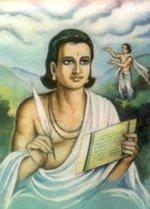 Kalidas flourished at the court of Agnimitra Shunga of Vidisha as is clear from
the Bharatavakya of the play Malavikagnimitra which says that when Agnimitra is
ruling the subjects feel secure from calamities. The Bharatavakya is not a part
of the play. It is sung after the play is over and even those characters which
are dead in the play participate in it as actors and not as characters. So
Agnimitra is not praised here by the characters but by living actors who have
just performed the play. Kalidas flourished at the court of Agnimitra Shunga of Vidisha as is clear from
the Bharatavakya of the play Malavikagnimitra which says that when Agnimitra is
ruling the subjects feel secure from calamities. The Bharatavakya is not a part
of the play. It is sung after the play is over and even those characters which
are dead in the play participate in it as actors and not as characters. So
Agnimitra is not praised here by the characters but by living actors who have
just performed the play.
This proves beyond doubt that Kalidas flourished at the time of
Agnimitra Shunga
in 150 BC. There are other arguments supporting this view but this is not the
place to go into them. It is necessary to bear in mind the date of Kalidas for
viewing the scientific statements of Kalidas in the background of
science that
is known to have existed in 150 BC.
Imagination is necessary for the poet as well as the scientist, but the poet and
the scientist use their imagination for different purposes. The poet uses it for
creating beauty while the scientist uses it for describing natural phenomena in
a way which helps in predicting and even controlling it. But the two types of
imaginations are seldom found in the same person.
Kalidas is such a rare person.
The phenomenon of day and night was well understood
even in the days of the Rigveda.
Hymn 1138 of the Rigveda speaks of the messengers of Vrtra wheering round the
parinaha or the globe of the earth. The Aitareya
Brahman affirms that the Sun neither sets nor
rises, He takes a turn and causes day and night.
Kalidas knows in addition to this that the movement takes place around the Meru
or the North pole. I was surprised to note that even some students of Sanskrit
do not know that Meru is the name of the North Pole though
Bhaskaracharya
clearly mentions it while explaining the day and night phenomenon at the poles
and even Apte’s dictionary clearly mentions that Meru is the name of the north
pole.
Kalidas recalls all this while describing the circumlocution of Aja and Indumati
around the fire as a part of their marriage rite. The verse says: "The couple
circumlocuting hand in hand around the fire whose flames were ascending, looked
like the day and night circumlocuting the high peaked Meru with their limits
marked by a common line.
Kalidas says that it is the day and night that rotate around the earth and not
vice versa as Aryabhatta said in the fifth century. In this he was following
science contemporary to him. But his genius lies in visualising how the
phenomenon would appear to an observer outside the earth when he is stationary
in relation to the Sun. I have met people who are incapable of visualising that
to those who land on the moon, the earth will appear above them and not below.
Kalidas however anticipates science in places. In the 14th canto of the
Raghuvansha Rama says about the calumny that befell Seeta: "Calumny is
irresitible. Even the moon can not escape it. What is merely the
earth’s shadow
is proclaimed as a stain by all and sundry".
This statement is often mistaken to refer to the shadow of the eclipse. But the
shadow of the eclipse is transitory. Again it is not regarded as a permanent
stain on the moon. Moon’s escape from the shadow of the eclipse is celebrated.
The stain on the other hand is permanent and is widely described as a stain.
It
is undeniable that Kalidas regards the stain as the shadow of the earth and is
NOT referring to the phenomenon of the eclipse.
This shows how apt the simile is and speaks for the poetic genius of Kalidas.
But in addition to poetic fancy the simile is a scientist’s theorising which
later on resulted in the astronomy of the eclipse. There is no evidence that the
astronomy of the eclipse was understood in 150 BC. S B Deelhit’s History of
Indian Astronomy does not refer to any astronomy of the eclipse before the
period of Aryabhatta, which is 5th century AD.
The above quoted verse indicates how the imagination of Kalidas worked with
heavenly phenomena. But heavenly phenomena engaged the human mind in the
remotest of periods. Man took interest in things remotest far earlier than in
things nearest i.e his own body and mind. Ancient man’s concern with his own
soul should not be cited against this statement because this concern was more
imaginative and emotional than scientific. But Kalidas displayed the capacity of
understanding the phenomenon of perception on the lines of the Physics of light.
Note the following verse in the Shakuntalam. The poet is describing the speed
with which the chariot of Dushyanta was being driven.
"What is really curved is being seen as straight".
In order to have such an experience one must move with a speed of at least 50
miles per hour. Such speed was not possible in the days of Kalidas.
A little explanation of how such a perception occurs will not be out of place.
This is the result of binocular vision. Two rays coming from the object seen to
the two eyes make an angle. The nearer the thing the greater the angle. Points
on a curved line are at different distances and therefore make different angles
at different times in the movement whereas points on a straight line are at the
same distance from the observer at different times in the movement. When the
difference in the angle is noticed the thing is seen as curved, when it is not
noticed it is seen as straight.
As in the psychology of vision Kalidas displays his insight in psychology of the
unconscious also. Psychologists did not talk of the unconscious mind before
Freud. That was in the twentieth century. But Kalidas not only had a grasp of
this idea, he has even used it for dramatic purposes. Dushanta of the
Mahabharata is an unprincipled womaniser who uses an innocent maiden just to
satisfy his lust and feigns ignorance of the whole affair when called upon to
take the responsibility of his own deed. Kalidas and the principles of
Dramaturgy in his days did not allow such a "hero". He has therefore employed
the sage Durvasa so that Dramaturgy is not violated and at the same time a very
powerful and tragic dramatic scene could be presented. It is the curse of Durvsa
to Shakuntala that makes Dushyanta forget Shakuntala. The curse erases the
memory of Shakuntala but leaves intact all the emotions that could be revived by
remembering her.
When he was sunk in such a blank past he heard one of his queens Hanspadika sing
the following song:
‘Oh you droning bee, having kissed the mango blossoms with hasty flight you are
now perched on the lotus, clean forgetting the blossoms.!
Polygamous husbands are habituated to such taunts but on this occasion Dushyanta
felt he is being stung on a soft spot. This made him restless. He tried to
pacify himself by the thought that some event in his past birth is throwing up
these emotions without reviving the memory of those events.
This is anticipation of Freud two thousand years ago.
(source:
The scientific genius of Kalidas -
By NR Waradpande - organiser.org).
7,000 copies of
Bhagavad Gita in area hotel rooms
Pull open a drawer in
some Houston hotel rooms, and beside your room-service menu and Gideons Bible,
you might find a copy of the
Bhagavad Gita. The sacred Hindu text is
making its way into nightstands across the country through a campaign to spread
the scripture and awareness about Lord Krishna, the deity believed to have
spoken the philosophical teachings millennia ago.
A local Hare Krishna temple has placed about
7,000 copies of the Bhagavad Gita in more than 100 hotels and motels in the
area.
The project has been successful because of the number of Indian hotel owners who
are familiar with the text and happy to place copies in their rooms as a way to
share the universal truths of their faith. Indian-Americans make up about 5 percent of the population but own about 40
percent of hotels and motels in the country, according to the Asian American
Hotel Owners Association. Across Houston and its suburbs, the Bible is about as familiar and accessible as
a phone book, but most people haven't heard of the Bhagavad Gita and probably
can't even pronounce it.
"It probably will surprise people to see a Gita. We're new enough that we
haven't gotten a whole lot of feedback," said Sarvabhauma Dasa, a spiritual
leader at the International Society for Krishna
Consciousness temple in Garden Oaks, which is helping sponsor the
Bhagavad Gita distribution locally. "Some Americans might be less open-minded to
some scriptures, but I think Americans are becoming much more broad, and
acceptance has really grown. Maybe 20 years ago, the acceptance wouldn't allow
it."
(source:
7,000 copies of Bhagavad Gita in area hotel rooms - chron.com).
Hindus selling
India for a US trip and visa for their kids
From scholarships and training programmes for officers to promises of Green
Cards and jobs for family members, America is doing whatever it takes to build a
lobby for itself in India.
The loquacious charm employed by United States President Barack Obama during his
India trip is merely one of the many force multipliers exercised by an
economically beleaguered Washington seeking to sell New Delhi varied military
equipment for billions of dollars, and affirming bilateral strategic ties as a
hedge against a resurgent China.
The other more protracted and consequently effective inducements are the raft of
scholarships to American universities handed out to the offspring of top Indian
politicians, civil servants and defence and intelligence officers, and the
patronage extended to Service officers under the long established Military
Education and Training (IMET) programme.
So blatant, widespread and generous is Washington’s largesse to the students —
facilitating and financing, as it does, their pursuit of eclectic disciplines
like the liberal arts, English literature and, even, art and history in leading
U.S. institutions — that it is worth asking to what extent Indian policy on a
range of issues of interest to America remains ‘hostage’ to the children of a
growing number of Delhi’s powerful decision-makers. The scholarship recipients’
list is embarrassingly revelatory.
(source:
Hindus selling India for a US trip and visa for their kids - By Rahul Bedi
-indianrealist.com).
United States 112th Congress lacking in Hindus
There are more Baptists and Methodists in Congress that
any other religious group, but nary a Hindu nor Jehovah’s Witness in
sight, according to the Pew Research Center’s Forum
on Religion & Public Life analysis of the religious composition of the 112th
Congress.
Like the rest of the country, Congress is majority Protestant and about 25
percent Catholic. Baptists and Methodists are the largest Protestant
denominations. Jews Presbyterians and Episcopalians have a larger representation
in Congress than in the country, while Muslims and Buddhists are about roughly
equal to their proportion in the general population.
But those with the least representation in Congress are representatives who have
no religious affiliation whatsoever. Only one percent (six Congressmen) are
unaffiliated or don’t specify a religious affiliation, while 16 percent of
American adults say they do not belong to any particular faith.
(source:
112th Congress lacking in Hindus and Jehovah’s Witnesses
- orlandosentinel.com).
 Did You Know Did You Know
Hindu gods of Bangkok
Everyone knows the famous Erawan Shrine in Bangkok dedicated to Lord Brahman,
but did you know there are another five Hindu shrines within a stone’s throw of
each other?
Bangkok is synonymous with Buddhism, but the city also has five other Hindu
shrines the size of Thailand’s ubiquitous spirit houses.
Together, these six shrines honour the Hindu deities of
Brahma, Indra, Narayana, Lakshmi, Trimurti and
Ganesha.
To visit and pray at all six is easy because they are all within walking
distance of one another. All six life-sized statues are located on relatively
small spaces, and worshippers pray in the open air.
It’s customary to start at the famous Erawan Shrine,
also called Brahman Shrine or Phra Phrom by the Thais. You should have no
problems locating it since every taxi driver in Bangkok knows this most revered
and famous of shrines in Ratchaprasong, the city’s pre-eminent shopping and
entertainment district. Millions, including Malaysians, visit annually, to
petition the four-faced Brahma to grant them their wishes. At anytime, you are
likely to find devotees beseeching Brahma to answer their prayers as well as
those who return to offer thanksgiving for wishes granted. Erawan Shrine sits on
a small, triangular patch of land beside the Grand Hyatt Erawan Hotel. How the
shrine came to be can be traced back to the 50s. During the construction of the
hotel in 1958, so many workers fell ill or suffered from accidents that
soothsayers were summoned to intervene. The spiritual advisors recommended that
a shrine be built in honour of Brahma, the Hindu god of creation. From the
beginning, it is said that Brahma answered all the prayers of his faithful
worshippers, with many returning to thank him by commissioning a performance by
classical dancers or donating wooden elephants to honour the sacred elephant of
Hindu mythology, Erawan.
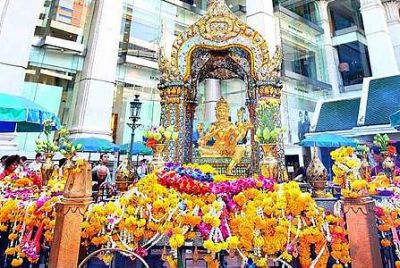
Erawan - Brahma shrine
***
After Erawan, the next shrine to visit is Indra’s in front of Amarin Mall. This
beautiful jade green Indra carries a
thunderbolt, discus, bow and triple-pronged lance. Indra is Lord of Heaven and
God of War, Storms and Rain. He is the god who looks after mankind. A symbol of
power and courage, Indra leads the way in the timeless battle between good and
evil and has more than 250 hymns dedicated to him in the
Rigveda, more than any other god.
Vishnu, in comparison, has only 93 hymns.
But not being part of the Holy Trinity, Indra is seen to exhibit more human
qualities. He slayed Vritra to release life-giving waters back to mankind and
also rescued the sacred cows of the gods from the asura or demons.
Offerings to Indra are usually yellow marigolds and small elephant figurines.
Once you’ve completed the ritual at Indra’s shrine, cross the road to worship
Narayana, whose shrine is located in front of Intercontinental and Holiday Inn
hotels. Narayana stands with one leg on the shoulder of his vehicle Garuda. In
each of his four hands, he holds the lotus bud which symbolises purity, the
discus which denotes the destruction of ego, the mace which stands for divine
power and the conch shell which shows his power over the universe. A god of
mercy, Narayana is also a manifestation of Vishnu, the preserver of life who
also maintains the balance of the universe. The Narayana statue was erected in
1997, following a bad period marked by a spate of bankruptcies, to help ailing
businesses. So if your business is in the doldrums, Narayana should be able to
make your cash registers ring merrily again.
Head to the fourth floor and ask to see the statue of beautiful
Lakshmi, Goddess of Luck, Wealth and
Fertility. You will find yourself escorted to the outdoor terrace where Lakshmi
stands resplendently above a golden lotus under a nine-layer umbrella. Lakshmi’s
statue was erected in 1996 by the owners of Gaysorn Plaza when it was being
built, and they have been laughing all the way to the bank ever since. As
Lakshmi is the consort of Narayana, who you have just worshipped, your petitions
should be doubly reinforced by this divine couple. Said to protect her devotees
from money-related woes, Lakshmi was born at the same time as other precious
celestial objects like the moon, her brother, and her elder sister Alakshmi, the
Goddess of Misfortune, during the celebrated Churning of the Ocean of Milk
period when amrita, the source of power and divinity, was produced. The
deva (heroes) and asura (baddies) were said to have used the serpent
Vasuki to stir the Kshisagar (Ocean of Milk) for a thousand years. Upon the
amrita being produced, Vishnu took the form of lovely Lakshmi to distract the
demons while the deva quickly drank the elixir and became immortal. Bring lotus
flowers, sugarcane juice, coins, jewels and other symbols of wealth as
offerings, and you will be rewarded manifold! Or so it is said.
Now cross the road to Central World Plaza where the
Trimurti Shrine is located in front of Isetan. As Trimurti is the
manifestation of the Holy Trinity of Brahma the Creator, Vishnu the Preserver
and Shiva the Destroyer, this shrine is said to be a powerful one. The joining
of this trio, the holiest and most important in Hinduism, into one statue make
Trimurti the representation of the cosmos. However, in recent years, Trimurti
has become very popular with young Thais for a different reason — they have
designated him the God of Love! As a result, there are endless streams of young
Thais and farang (foreigners) who pray to have the affairs of their heart
sorted out.
A few steps away is Ganesha Shrine, devoted
to the elephant-headed god, a.k.a. the Remover of Obstacles, Lord of Beginnings,
Patron of the Arts and Sciences, and Deity of Intellect and Wisdom. Also known
as Ganesh or Ganapati, he is known as Pikanet in Thai and his power is said to
be in ascendance now. Devotees usually invoke his name at the beginning of
prayers, important undertakings and religious ceremonies.
(source:
Hindu gods of Bangkok
- thestar.com). For more on Hinduism in
Thailand refer to chapters on
Glimpses
XVI and
Suvarnabhumi
|